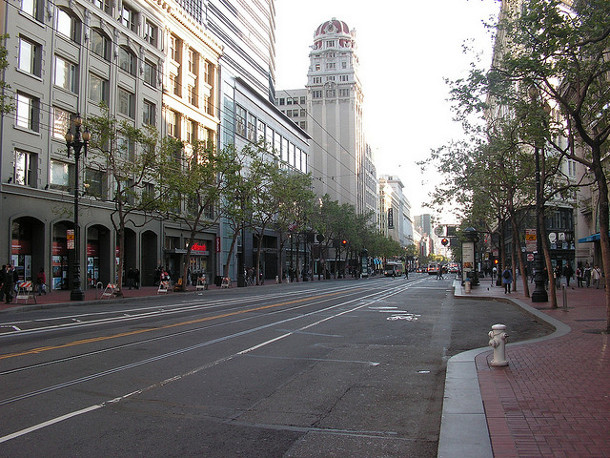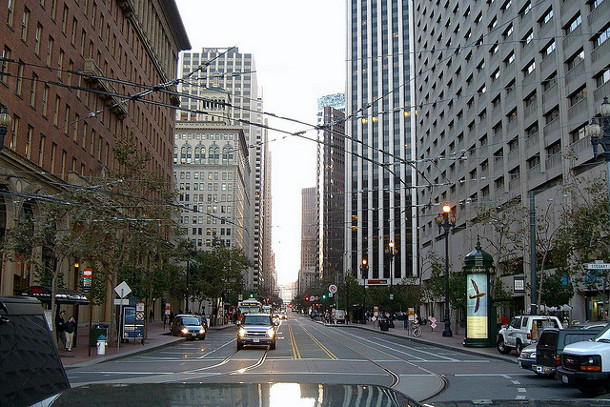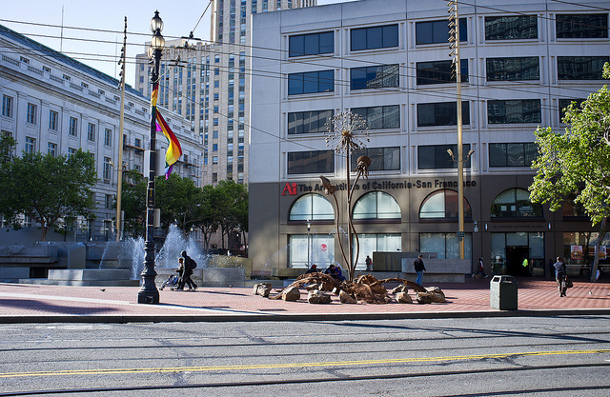I am lucky enough to live within a (long) walk of my job. I often take advantage of this proximity, walking home along an unattractive stretch of San Francisco’s Market Street. Alternately teeming with tourists or occupied by people who are generally down-and-out, this three mile stretch between work and home leaves a lot to be desired. It doesn’t feel especially pleasant or safe. Still, I regularly walk it — because I like to end the day with a bit of exercise, or I have some of my favorite podcasts queued up, or I have a friend to accompany me.
What is it about this route that fails to excite? It could be several different factors, surely none of which were intended to prevent people from enjoying themselves. In fact, there are plenty of elements that seem like they ought to make it a more attractive, comfortable, and popular thoroughfare: wide streets, for instance, lined with trees (that, yes, could be doing much better), bike lanes, public art, and businesses.

Yet Market Street doesn’t work all that well. There is general agreement about this, and there is a movement to advance a 10 year improvement plan. Professionals as well as citizens are putting a lot of thought and work in to what will make Market Street more successful and memorable, and I think a lot of people in San Francisco are cautiously optimistic about the potential improvements.
From a user standpoint, the interesting thing is that we don’t generally remember the specific features of a place that affect our experience of it. Like all good design, successful streets appear to simply work. In other words, we don’t remember how places look — we remember how they feel.
The response to the experience of a place is an instinctive human reaction, and has no moral value, but its effect on the overall success or failure of a space is hugely significant. Does it feel good to be there? This elusive goal is part of what makes successful planning and design such a challenge.

When was the last time you had a long conversation about how much you loved decorative crosswalks or the specially-picked lampposts, or whatever design feature it is, that you saw on a trip somewhere? Did those details really stick in your mind, or was it something else, something almost undefinable, that made you love being there?
I’m not saying that planners and designers aren’t concerned with creating places that feel good (or that they should never incorporate decorative crosswalks). Many of them are. But I do think sometimes we prioritize aesthetic details over the human experience, what it means to actually stand somewhere and experience a place.
Design works in support of improved function as well as of experience. And ultimately, the experience of a place is what comes to define it. What are some of the places that have the best feel? What design elements do you think contribute to this?
Images: Wouter Kiel, Laughing Squid, MicGloWall






Leave Your Comment